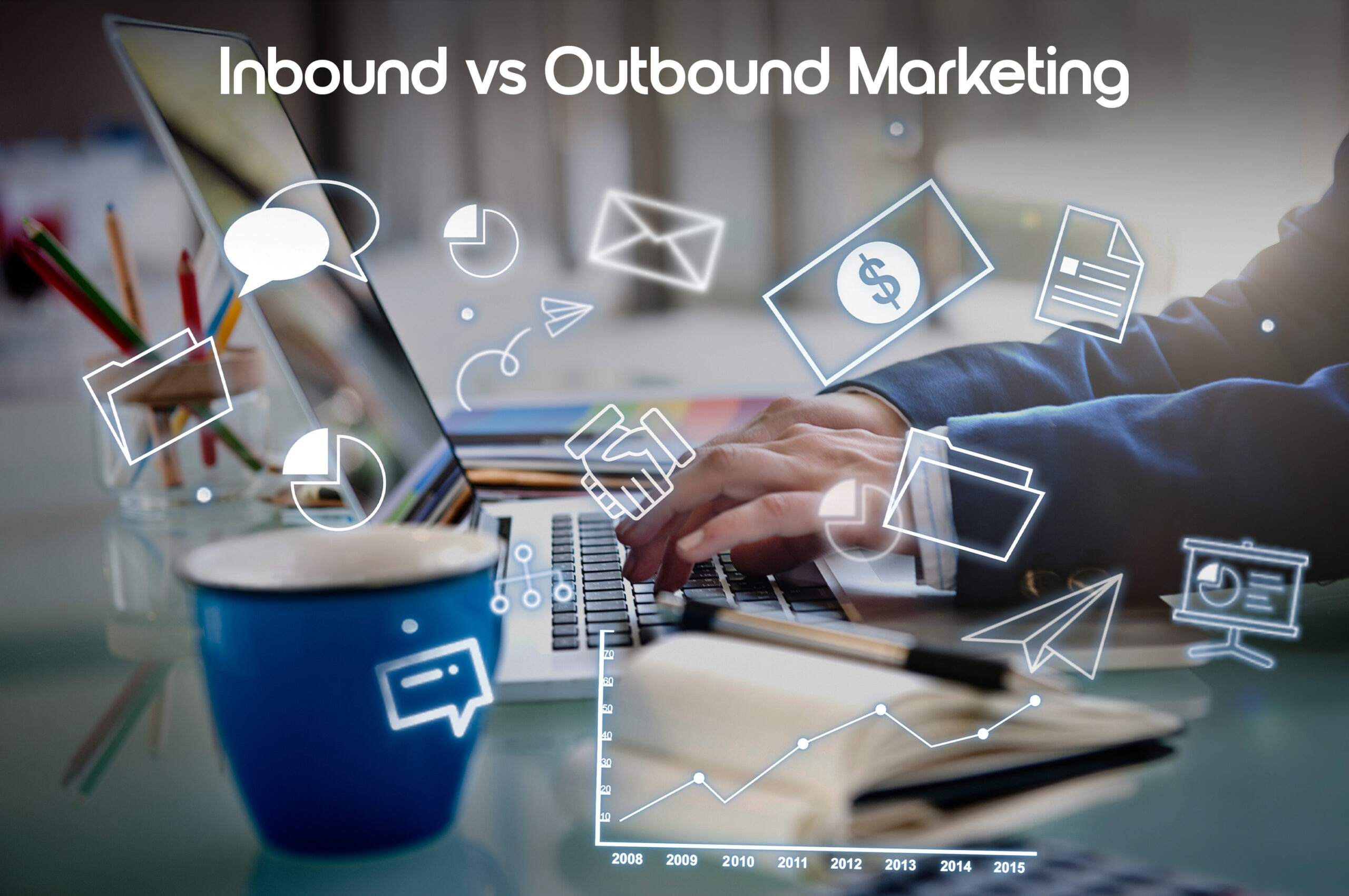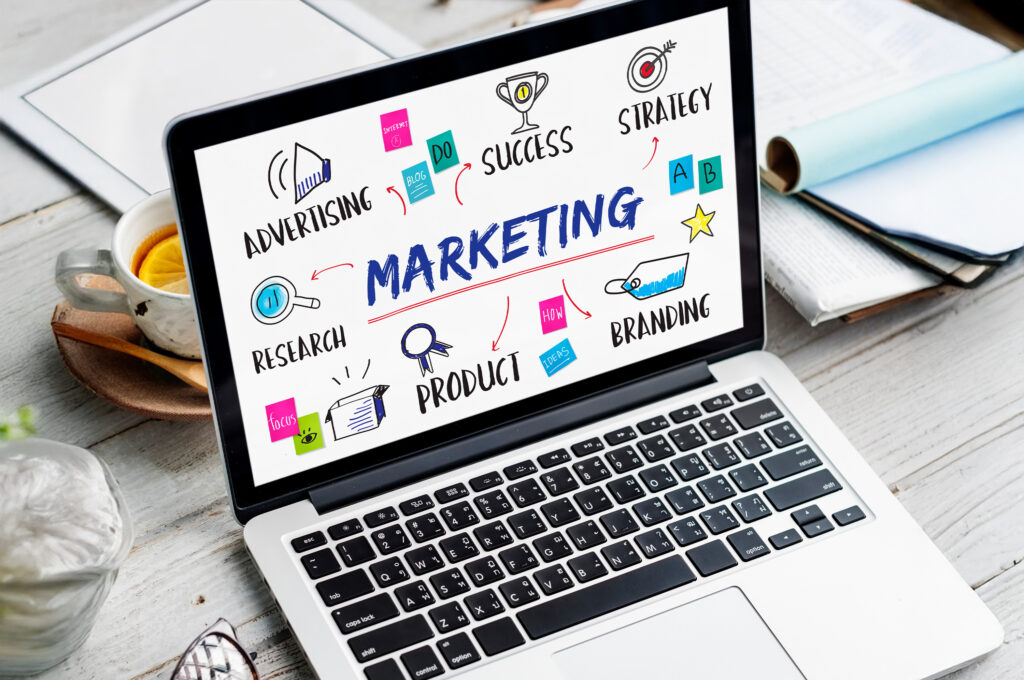
Inbound vs Outbound Marketing: Which Approach Drives Better Results for Your Business?
- Arslan Tahir
- April 29, 2025
- Web Design
- 0 Comments
Alright, imagine: You’re throwing a party, but instead of inviting people, you’re just standing on the sidewalk shouting, “Come to my party!” Sounds awkward, right? That’s what outbound marketing feels like – you’re pushing your message out there, hoping someone hears it. Meanwhile, inbound marketing is like setting up the perfect party and letting people come to you because they’re curious about what you’ve got going on. Which one sounds more fun?
In the world of marketing, businesses often find themselves stuck between two strategies: inbound vs outbound marketing. But which one should you bet your marketing budget on? In this post, we’ll break down these two approaches, using some fun and relatable scenarios, and help you figure out which one works best for your business. Spoiler alert: it’s not just about one or the other – it’s about finding the perfect balance!
What Is Inbound vs Outbound Marketing?
Before we get into the details, let’s first set the stage for what we’re really talking about when we say inbound vs outbound marketing.
- Inbound marketing is like the cool kid who throws an awesome party and waits for people to show up. This strategy attracts customers through valuable content, SEO, and social media. Instead of chasing people down with your message, inbound marketing lets them come to you because they’re interested in what you have to offer.
- On the other hand, outbound marketing is more like that guy at the party who’s constantly interrupting conversations, trying to sell you something you don’t need. It includes things like TV ads, radio spots, direct mail, and cold calling – basically, any method where you’re pushing your message out to as many people as possible, hoping some of them will bite.
Key Differences Between Inbound and Outbound Marketing
Let’s break down the differences between inbound and outbound marketing in a way that even your grandma could understand (and hey, she might even like the story).
- The Approach:
- Inbound marketing is the party that’s so good, people want to join. It’s all about attracting your audience by offering something valuable – like content that solves their problems, makes them laugh, or gives them useful tips.
- Outbound marketing is like shouting at random strangers on the street. Sure, you might grab a few people’s attention, but it’s more about pushing your message into their faces without asking if they’re even interested.
- Engagement:
- Inbound marketing is the BFF of customer relationships. You’re providing value, helping, and nurturing your leads until they’re ready to take the plunge and buy.
- Outbound marketing? Not so much. It’s like forcing someone to buy your product before they even know what it is. You’re interrupting them while they’re trying to watch Netflix, and they’re not exactly excited about it.
- Costs:
- Inbound marketing is often more cost-effective. It relies on creating and sharing content that grows your audience over time.
- Outbound marketing can be expensive, especially with traditional channels like TV ads, radio ads, or large-scale print campaigns.
Benefits of Inbound Marketing
The advantages of inbound marketing have made it the top choice for numerous companies, particularly in the digital era. Here are a few key benefits:
Long-Term Effect: The results of inbound marketing last over time. You can build an audience over time who stays with your brand when they see useful content (such as blogs, social media posts, and videos) that you created. This leads to sustainable growth.
Higher ROI: Because inbound marketing generally involves an affordable method such as SEO, content marketing, and social media, it typically has a better return on investment (ROI) than outbound marketing.
Customer Trust: One of the primary advantages of inbound marketing is that it can help you build trust with your customers. By filling them with useful information, you position your business as an expert in your industry, and that prompts potential customers to contact you.
Reach Targeted Audiences: With inbound marketing you can target who you want to see your content at the exact moment you want them to. For example, if someone is searching for information about a product you sell, your SEO content may appear in their search.
Disadvantages of Outbound Marketing
While outbound marketing techniques can still be effective, especially for certain industries, they do come with their fair share of challenges. Here are some disadvantages of outbound marketing:
- Interruptive Nature: One of the main complaints about outbound marketing is that it can be disruptive. Consumers are bombarded with ads everywhere they go. This can lead to ad fatigue and even resentment toward brands.
- Low Conversion Rates: Because outbound marketing casts a wide net, it often leads to lower conversion rates. You may reach a large number of people, but only a small percentage will be genuinely interested in your products.
- High Costs: Traditional outbound marketing methods, like TV ads, radio spots, and billboards, can be costly. For small businesses, these expenses can drain marketing budgets without providing the desired return.
- Difficult to Measure Effectiveness: It’s harder to track the direct effectiveness of outbound marketing examples. While you might see an increase in sales, it’s not always clear which specific efforts are contributing to the success.
Classic Outbound Marketing Examples
We can’t totally ignore outbound marketing examples – after all, it’s still around. Here are some of the traditional tactics:
- TV commercials that interrupt your Netflix binge (ugh)
- Radio spots that come on during your morning commute
- Calls during dinner time (sorry, we’re busy eating!)
- Direct mail ads that go straight to the recycling bin
- Banner ads on websites you never click
Inbound Marketing vs Traditional Marketing: What’s the Difference?
If you’ve been in the marketing game for a while, you might be thinking about the age-old debate: inbound marketing vs traditional marketing. The difference is pretty simple:
- Traditional marketing is the loud, expensive way to get your message out. Think about ads on TV, billboards, or cold calls – they’re all about pushing a message.
- Inbound marketing, however, is about drawing people in. It’s about creating content that speaks to their needs and interests, letting them find you when they’re ready.
So, if you’re still using old-school tactics, it might be time to think about upgrading to the digital world of inbound marketing strategies.
Digital Marketing Inbound vs Outbound: The Final Showdown
In today’s digital age, digital marketing inbound vs outbound is becoming more of a showdown. Here’s why inbound marketing wins in most cases:
- It’s More Affordable: Running a targeted ad campaign on social media or improving your website’s SEO costs a fraction of what it takes to run a TV ad.
- Results Are Measurable: With inbound marketing, you can see how many people visited your site, read your blog, or clicked on your email link. It’s easier to track ROI and adjust strategies on the fly.
- Better Engagement: Digital inbound marketing is all about interaction. You can respond to comments, engage with customers on social media, and personalise your marketing campaigns.
So, Which One is Better: Inbound or Outbound Marketing?
We’ve reached the big question: which is better: inbound or outbound marketing? The truth is, it’s not about choosing one over the other. Both strategies can work together in a balanced marketing plan.
At Media Quokka, we believe in mixing the best of both worlds. Whether you want to attract customers through content and SEO or amplify your message with a well-placed ad, we can help you find the sweet spot for your business.
Inbound Marketing Examples You’ll Love
Need some inbound marketing examples to get inspired? Here are a few ideas to get you started:
- Crafting blog posts that help your audience solve their problems (it’s like offering free advice at a coffee shop).
- Sharing funny or informative social media posts that get people talking.
- Hosting webinars that show off your expertise (and give away free knowledge).
- Creating downloadable guides that are so good, people can’t resist clicking the download button.
Final Thoughts
Whether you’re team inbound vs outbound marketing, it’s clear that each approach has its place. But, in the end, inbound marketing strategies are often the best choice for building lasting relationships with customers and driving long-term results.
At Media Quokka, we specialise in helping businesses like yours figure out the perfect marketing mix. So, if you’re ready to get serious about your marketing game, let’s chat – we’ve got your back.




